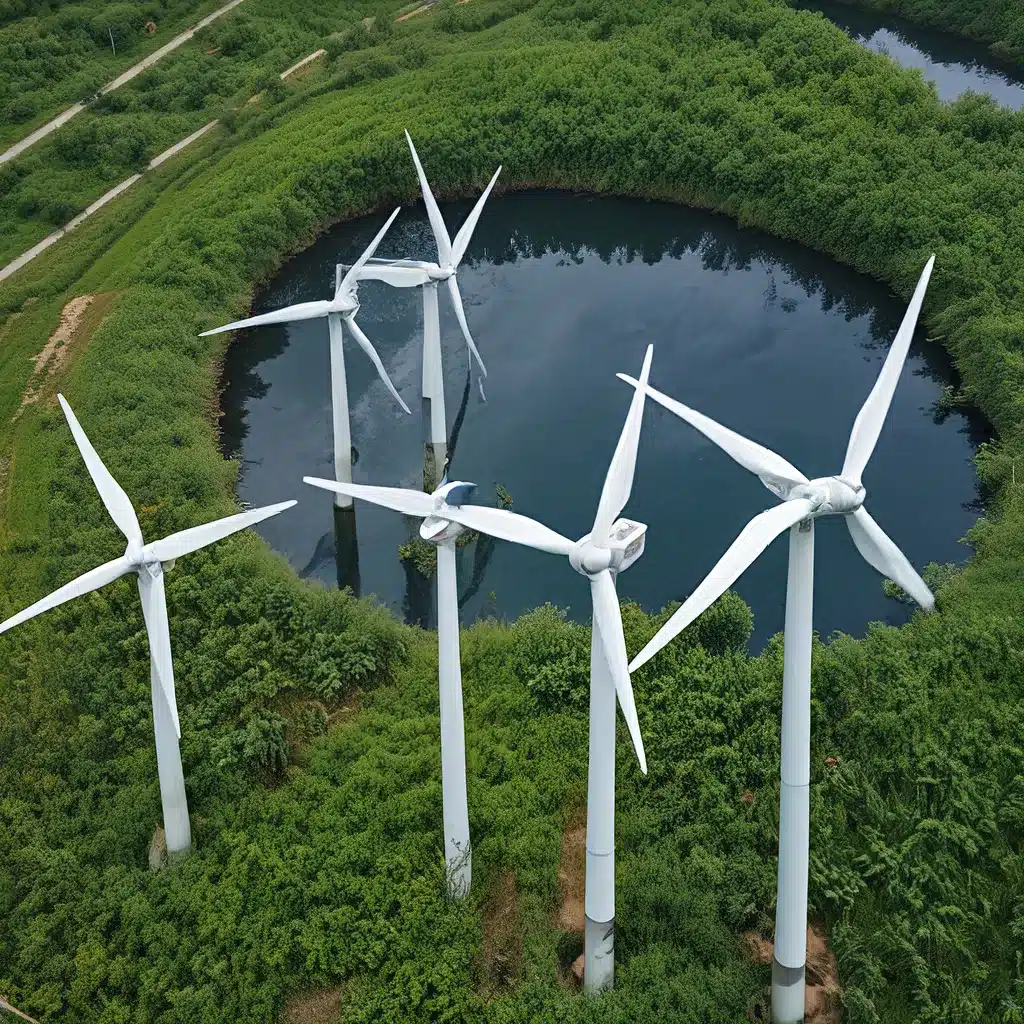
The Dawn of a Sustainable Revolution
As I dive deeper into the world of renewable energy and the circular economy, I can’t help but feel a sense of excitement and optimism. These two powerful concepts are not just trends – they represent a fundamental shift in the way we think about energy, resources, and our collective future.
Let me share with you a personal anecdote that sparked my interest in this topic. A few years ago, I attended a sustainability conference where the keynote speaker painted a vivid picture of a world powered by clean, renewable energy and driven by a circular approach to resource management. The speaker’s passion and the clear-eyed vision they shared left a lasting impression on me. I realized then that this wasn’t just another buzzword – it was a transformative movement that could reshape the way we live, work, and interact with our environment.
Defining the Circular Economy
The circular economy is a concept that’s been gaining traction worldwide, and for good reason. It’s a radical departure from the traditional “take-make-waste” linear model that has dominated our industrial and economic systems for centuries. Instead, the circular economy envisions a closed-loop system where resources are continuously reused, recycled, and regenerated, minimizing waste and environmental impact.
At the heart of the circular economy is the idea of “cradle-to-cradle” design, where products are intentionally designed to be easily disassembled, repaired, reused, or recycled at the end of their useful life. This not only reduces waste but also unlocks new economic opportunities by turning waste streams into valuable feedstocks for other industries.
The Renewable Energy Connection
Now, where does renewable energy fit into all of this? Well, it’s a crucial piece of the puzzle. Renewable energy sources, such as solar, wind, and hydropower, are inherently circular in nature. They harness the natural cycles and flows of our planet to generate clean, sustainable electricity without depleting finite resources or producing harmful emissions.
By aligning the growth of renewable energy with the principles of the circular economy, we can create a symbiotic relationship that amplifies the benefits of both. For example, the production and installation of renewable energy technologies like solar photovoltaic (PV) systems can be optimized to minimize resource use, maximize material recovery, and ensure long-term sustainability.
NREL researchers have been at the forefront of modeling and analyzing the circular economy potential of renewable energy systems. They’ve developed advanced tools to quantify the environmental, social, and economic impacts of circular transitions, helping to guide policymakers and industry leaders towards more sustainable solutions.
Policies for a Sustainable Future
But achieving this vision of a renewable-powered, circular economy is no easy feat. It requires a coordinated effort across governments, businesses, and civil society. That’s where policy alignment comes into play.
The European Union has taken a leading role in this regard, with the introduction of the EU Taxonomy – a comprehensive classification system for defining and identifying sustainable economic activities. This groundbreaking framework not only helps direct investments towards the most impactful green initiatives but also serves as a common language for sustainability across the continent.
By establishing clear and consistent criteria for what constitutes an environmentally sustainable activity, the EU Taxonomy empowers companies, investors, and policymakers to make more informed decisions and drive the transition towards a low-carbon, circular economy.
Navigating the Complexities
Of course, creating a coherent policy landscape for renewable energy and the circular economy is a complex and multifaceted challenge. There are competing interests, technological hurdles, and societal dynamics to consider.
For example, the integration of nuclear power and natural gas into the EU Taxonomy has been a topic of fierce debate, with ongoing discussions around their role in the transition towards a sustainable future. Recent research suggests that these energy sources may have a place in the circular economy, but their utilization must be carefully evaluated and aligned with broader environmental and climate goals.
Similarly, the recovery and recycling of critical materials used in renewable energy technologies, such as lithium-ion batteries and solar PV panels, is an area of active study and policy development. Ensuring a reliable and sustainable supply of these essential materials is crucial for the long-term viability of the renewable energy transition.
A Future of Endless Possibilities
As I reflect on the journey so far, I’m struck by the sense of possibility that permeates this space. The convergence of renewable energy and the circular economy represents not just a technological or economic shift, but a profound cultural and societal transformation.
Imagine a world where our energy systems are powered by the sun, wind, and water, and our waste is seen not as a burden but as a valuable resource. Where products are designed with longevity, repairability, and recyclability in mind, and where every industry collaborates to create a closed-loop, sustainable ecosystem.
This is the future that is within our grasp, and it’s up to us – policymakers, businesses, and individuals – to seize the opportunity and make it a reality. By aligning our policies, investments, and actions towards this shared vision, we can unlock a new era of prosperity, resilience, and environmental stewardship.
So, let’s roll up our sleeves and get to work. The sustainable revolution is here, and it’s up to us to shape it.

